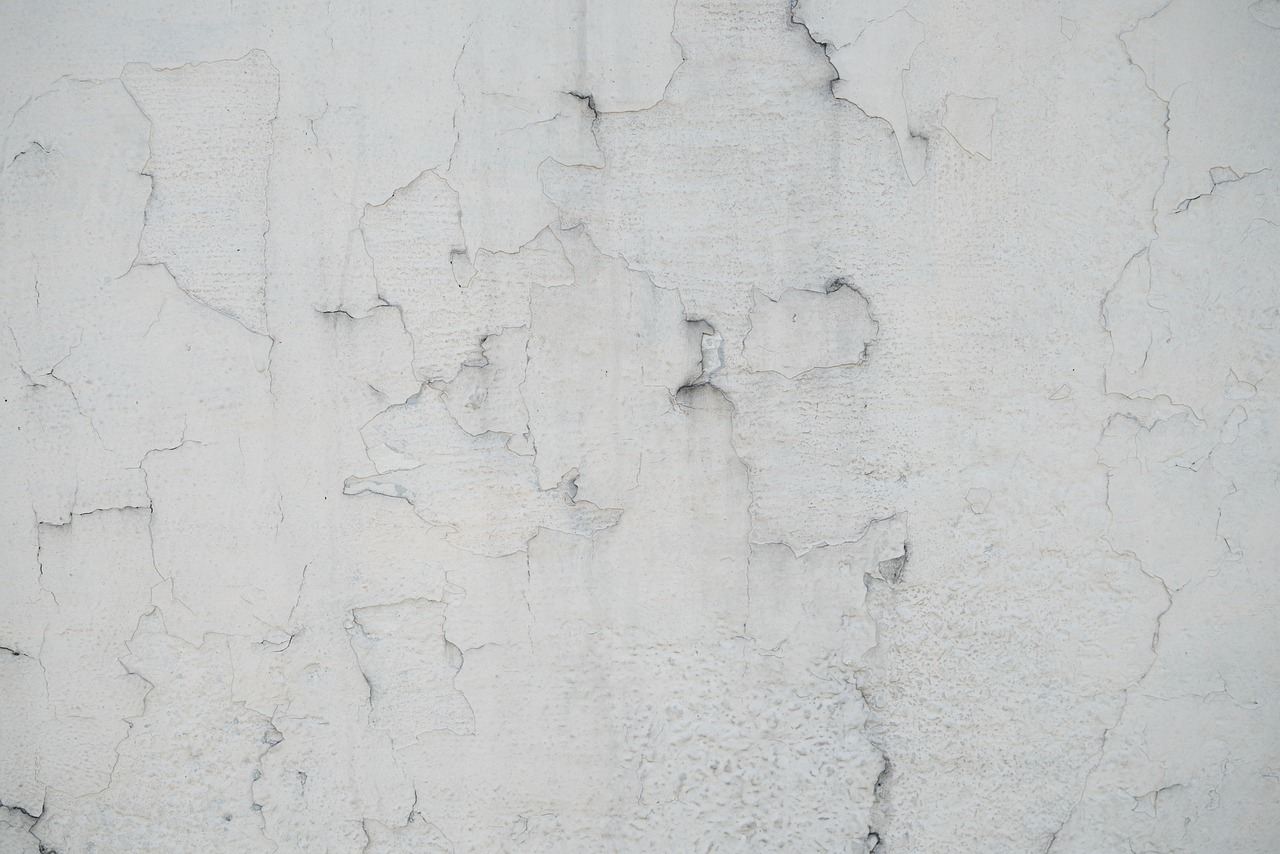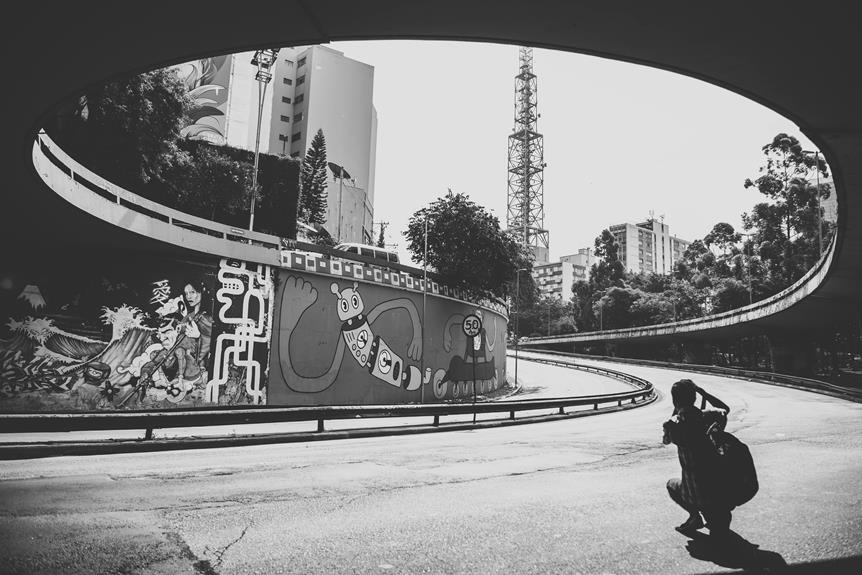Urban Art
Urban art, emerging from 1970s New York, has evolved from simple graffiti to intricate street murals, gaining global recognition. Techniques like spray painting, stencilling, and wheat-pasting shape its diverse styles, transforming urban spaces into vibrant galleries. Icons like Banksy and Shepard Fairey influence both cultural and political landscapes with their powerful works. Urban art strengthens community bonds, enhances cultural identity, and promotes social unity through public engagement. Festivals worldwide highlight trends and connect artists with enthusiasts. Dive deeper into urban art to discover its rich history, techniques, and community impact.
Key Points
- Urban art originated in 1970s New York City as a form of expression for marginalized communities.
- Techniques range from spray painting and stencilling to wheat-pasting and murals, innovating through diverse mediums.
- Urban art enhances cultural identity and promotes social unity by transforming public spaces and empowering local communities.
- Iconic artists like Banksy and Shepard Fairey use urban art to deliver powerful political and social messages.
- Urban art festivals provide platforms for artists, shape market trends, and foster community engagement.
History of Urban Art
Urban art took root in the 1970s New York City, emerging as a vibrant form of expression for marginalized communities. You can trace the evolution of urban art from simple graffiti tags to complex street murals.
Originally a local phenomenon, it didn’t take long for this bold art form to achieve global urban influence. Artists like Banksy and Shepard Fairey have transcended geographical boundaries, turning streets worldwide into open-air galleries.
Urban art has morphed into a powerful medium for political statements, social commentary, and cultural expression. As its profile has risen, so has its market value, with significant auction sales and increased museum acceptance, making it a staple in both physical and digital art spaces.
Techniques and Styles
From the intricate stencils of Banksy to the vibrant murals of Os Gemeos, urban art’s diverse techniques and styles make it a compelling and dynamic visual language.
Urban art techniques have evolved greatly, showcasing innovation through various mediums. Artists employ spray painting, stencilling, wheat-pasting, and creating large-scale murals to express their visions.
Urban art thrives on its adaptability and constant evolution. Street art styles range from the raw, rebellious graffiti tags to sophisticated stencil works and eye-catching paste-ups. This diversity not only beautifies urban spaces but also delivers powerful messages.
Key elements include:
- Spray painting for bold, quick applications.
- Stenciling for intricate, repeatable designs.
- Wheat-pasting for adding layers and textures.
- Murals for large-scale, immersive experiences.
These methods define and diversify urban art’s ever-changing landscape.
Impact on Communities
You’ll find that urban art greatly enhances cultural identity by reflecting the unique stories and traditions of local communities.
It also promotes social unity by bringing diverse groups together through shared experiences and collaborative efforts.
As urban art continues to evolve, its impact on community cohesion and cultural expression becomes increasingly profound.
Cultural Identity Enhancement
Murals, graffiti, and street art play a pivotal role in enhancing cultural identity by vividly showcasing the unique characteristics, history, and values of local communities. These forms of urban art foster community engagement and cultural preservation by giving a voice to marginalized groups. They empower locals through artistic expression, making public spaces vibrant and meaningful.
Residents actively participate in creating and appreciating art.
Art illustrates and safeguards local traditions and stories.
Artists from the community gain recognition and influence.
Diverse perspectives are shared, enriching cultural dialogue.
Social Unity Promotion
Urban art fosters social unity by transforming public spaces into inclusive galleries where local artists and community members connect and collaborate.
In South London, urban art provides affordable exhibition spaces, enhancing community engagement. Events like the Urban Art Fair raise funds, with 10% of sales donated to charity partners such as Holy Trinity School and Jubilee Primary School, directly benefiting local causes.
Community members, including partners like the Southside Rehabilitation Project and the Anchor Group, serve as marshals, furthering local empowerment.
Additionally, platforms like Urban Art 2024 enable artists to showcase their work while contributing to the community’s vibrancy. This dynamic interaction between art and community strengthens social bonds, fostering a shared sense of purpose and belonging.
Famous Urban Artists
When exploring famous urban artists, you’ll notice a spectrum of iconic street art styles and influential movements. From Banksy’s provocative stencils to Shepard Fairey’s bold political messages, these artists shape the urban landscape and spark global conversations.
Understanding their work offers insight into the cultural and social currents driving urban art today.
Iconic Street Art Styles
In the ever-evolving world of street art, Banksy’s politically charged stencils and Shepard Fairey’s socially resonant posters have become quintessential elements of urban landscapes, setting benchmarks for modern artistic activism.
The evolution of street art has brought forth a rich tapestry of styles, each imbued with distinct urban art symbolism. Invader’s pixelated mosaics, inspired by retro video games, add a playful yet nostalgic element to cityscapes.
Os Gemeos’ vibrant murals, with surreal characters sporting yellow skin, inject cultural and imaginative flair into public spaces. Swoon’s intricate paper cutouts and wheatpaste installations merge art with activism, emphasizing social issues and community involvement.
Influential Urban Art Movements
As you explore the world of influential urban art movements, you’ll encounter the groundbreaking contributions of renowned artists like Banksy, Shepard Fairey, Os Gemeos, and Swoon, whose works have shaped the cultural and political landscapes of cities worldwide.
Banksy’s thought-provoking pieces often challenge urban art censorship and advocate for freedom of expression.
Shepard Fairey’s activism-driven art, including the iconic ‘Hope’ poster, has earned global recognition.
Os Gemeos’ vibrant murals celebrate cultural expression, while Swoon’s intricate stencil art adds emotional depth to urban narratives.
These artists not only promote urban art preservation but also highlight the power of street art in fostering political dialogue and social change across the globe.
Urban Art Festivals
Urban Art Festivals, like the renowned Urban Art 2024, offer an unparalleled platform for over 120 exhibitors to connect with art enthusiasts and showcase their innovative work directly. These festivals are pivotal in shaping the urban art market by highlighting emerging trends and fostering international expansion. They break conventional norms, evoke emotions, and offer a sensory overload with mouth-watering food stalls.
Urban Art Festivals also benefit the local community:
- Affordable exhibition space for South London artists
- Donation of 10% of sales to charity partners
- Opportunities for exhibitors to book future events
- Enhanced community engagement through art
Urban Art and Social Issues
Although often visually engaging, urban art serves as a powerful medium for addressing pressing social issues and sparking meaningful dialogue within communities.
Artists like Banksy and Shepard Fairey harness their creative talents for political activism, using murals and graffiti to challenge societal norms and injustices.
Urban art isn’t just about aesthetics; it’s a call to action that fosters community engagement. Through stencils and paste-up art, these artists highlight issues ranging from inequality to environmental concerns.
By transforming public spaces into canvases for social commentary, urban art promotes awareness and drives conversations that can lead to real change.
It’s a vibrant, dynamic way to reflect and respond to the challenges faced by society today.
Frequently Asked Questions
What Is the Meaning of Urban Art?
You’re exploring a vibrant art form with deep cultural significance. It has historical roots in activism and social commentary, often transforming public spaces into platforms for expression. Urban art’s evolution reflects society’s changing values and artistic trends.
What Is Urban Style Art?
You’re exploring urban style art, which blends various artistic techniques like graffiti, stencils, and murals. It draws from cultural influences to create bold, expressive works that often carry significant social and political messages, transforming cityscapes.
What Are the Features of Urban Art?
You’ll notice urban art features dynamic graffiti murals and eye-catching public installations. It’s bold, often socially impactful, and transforms city landscapes. It’s not just art—it’s a conversation, a statement, and an evolving cultural phenomenon.
Are Urban Art and Street Art the Same?
You might think urban art and street art are the same, but they differ. Street art often makes bold social commentary, while urban art has a global influence, encompassing a wider range of themes and styles.
Conclusion
You’ve explored the rich tapestry of urban art, from its historical roots to its modern-day impact.
You’ve seen the diverse techniques and styles that make it so compelling, as well as how it transforms communities and addresses social issues.
You’ve also discovered some of the prominent artists and vibrant festivals that celebrate this dynamic form.
Urban art isn’t just a trend; it’s a powerful, evolving movement that continues to shape and inspire the world around you.
Author: Jessica Hartley

